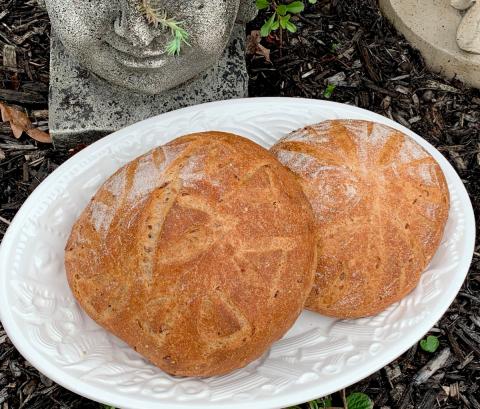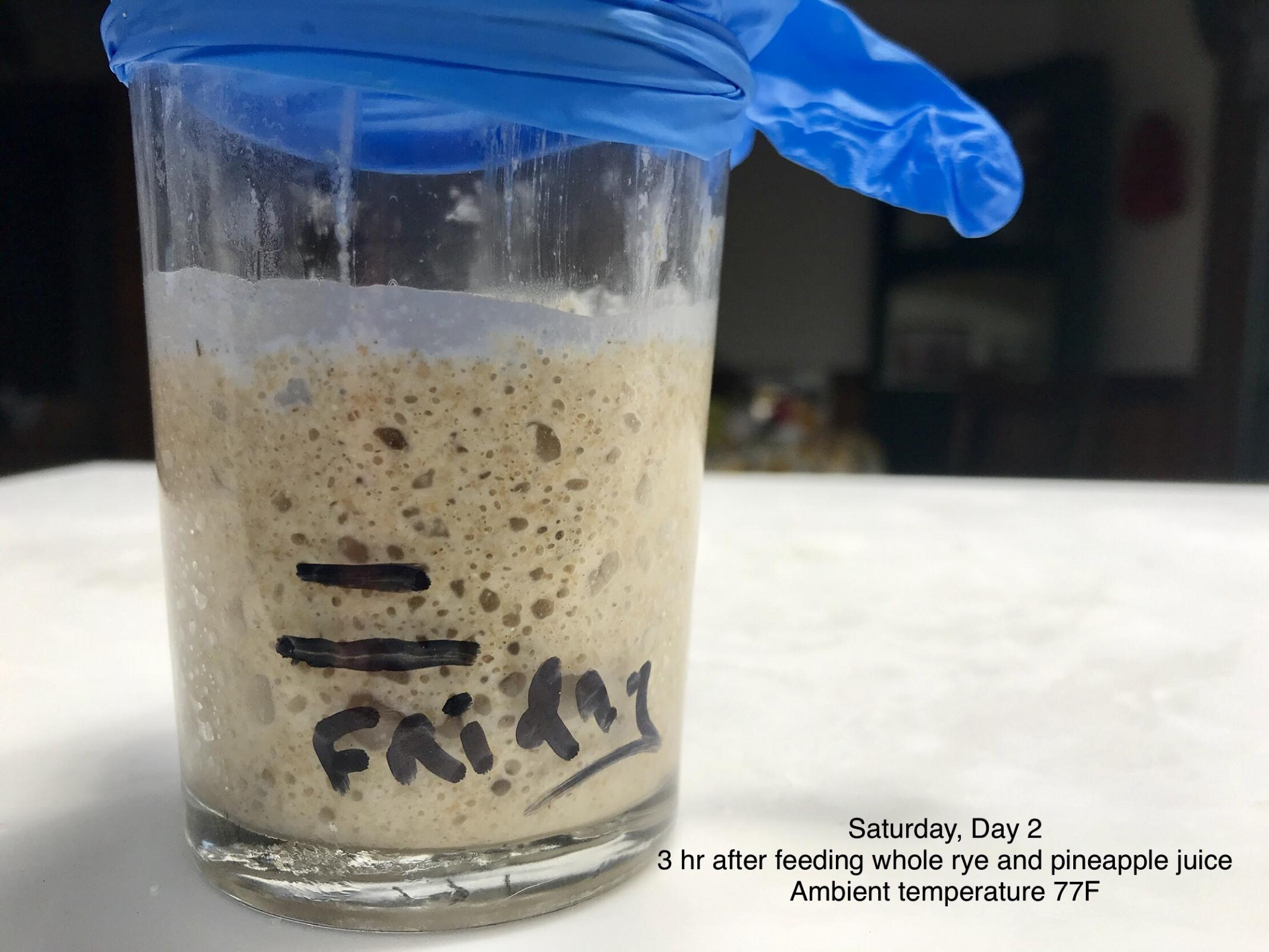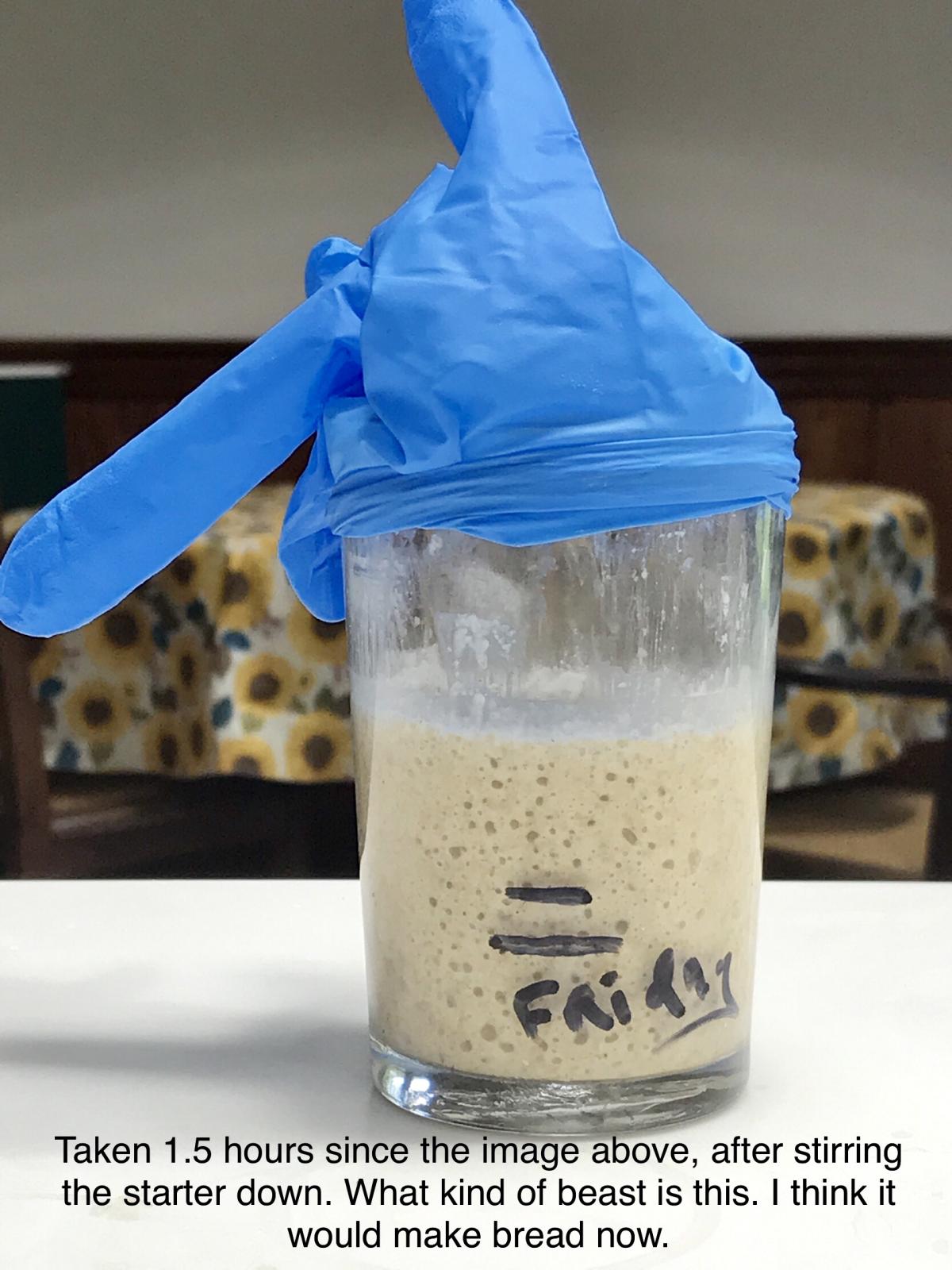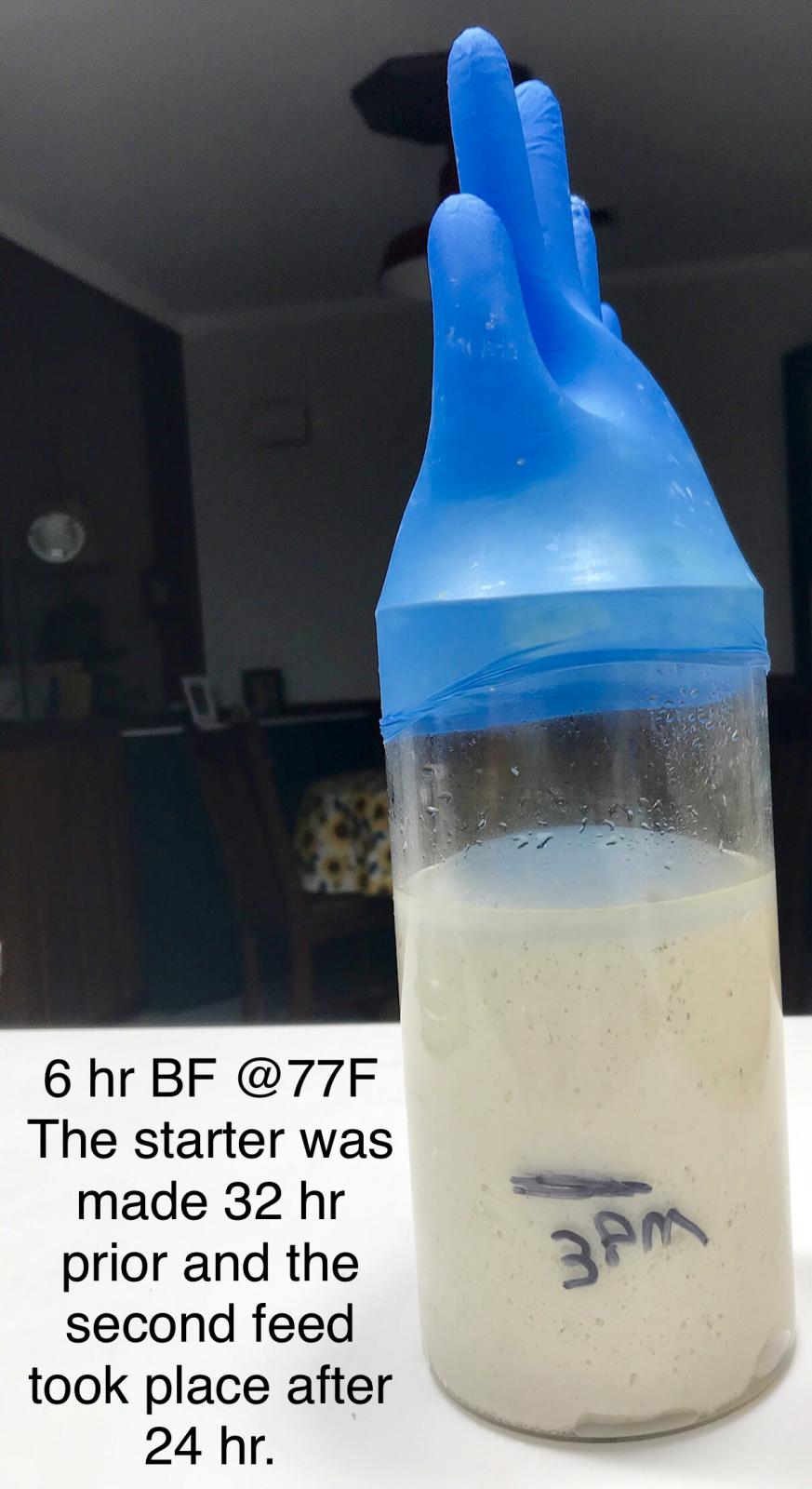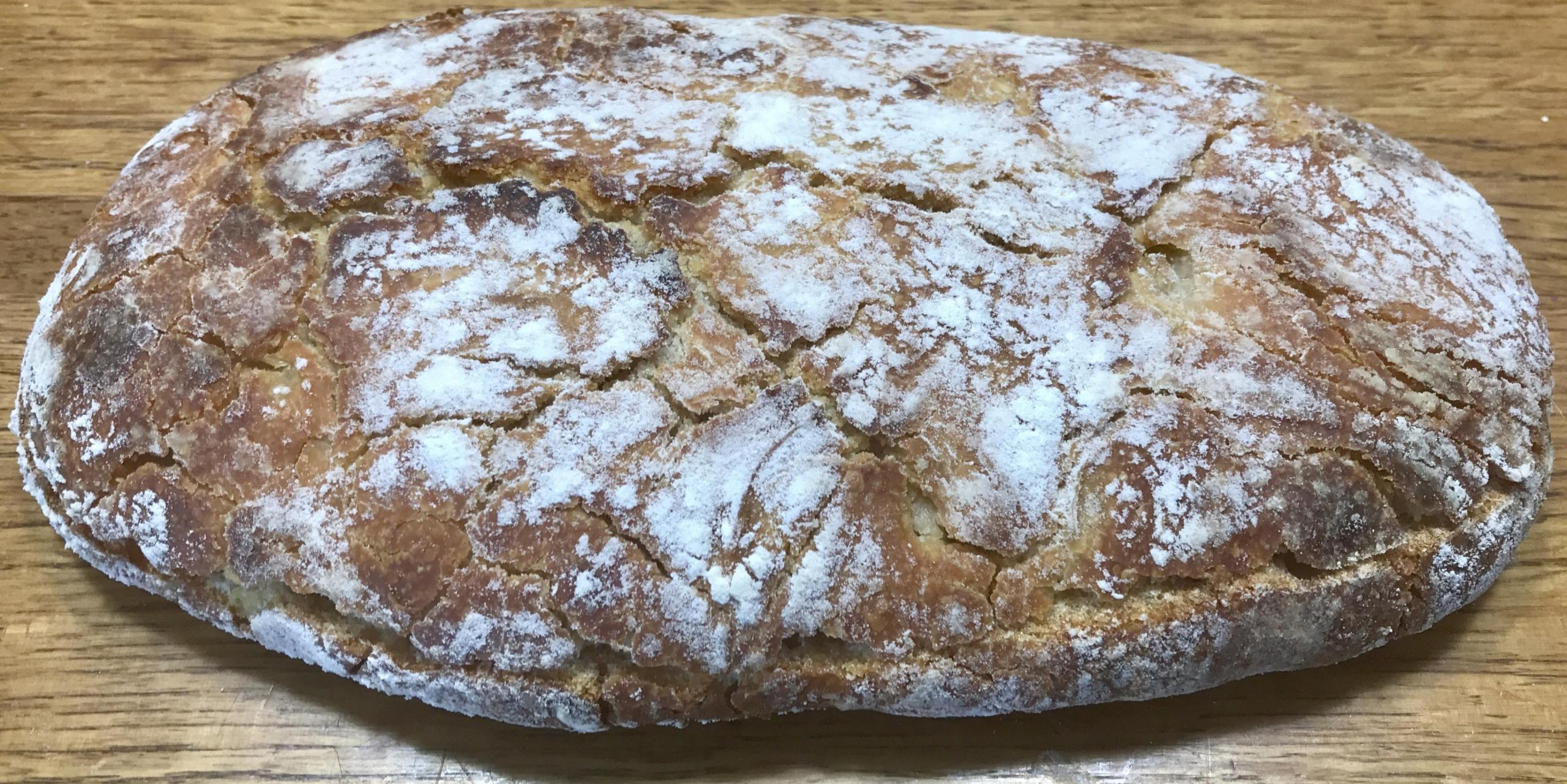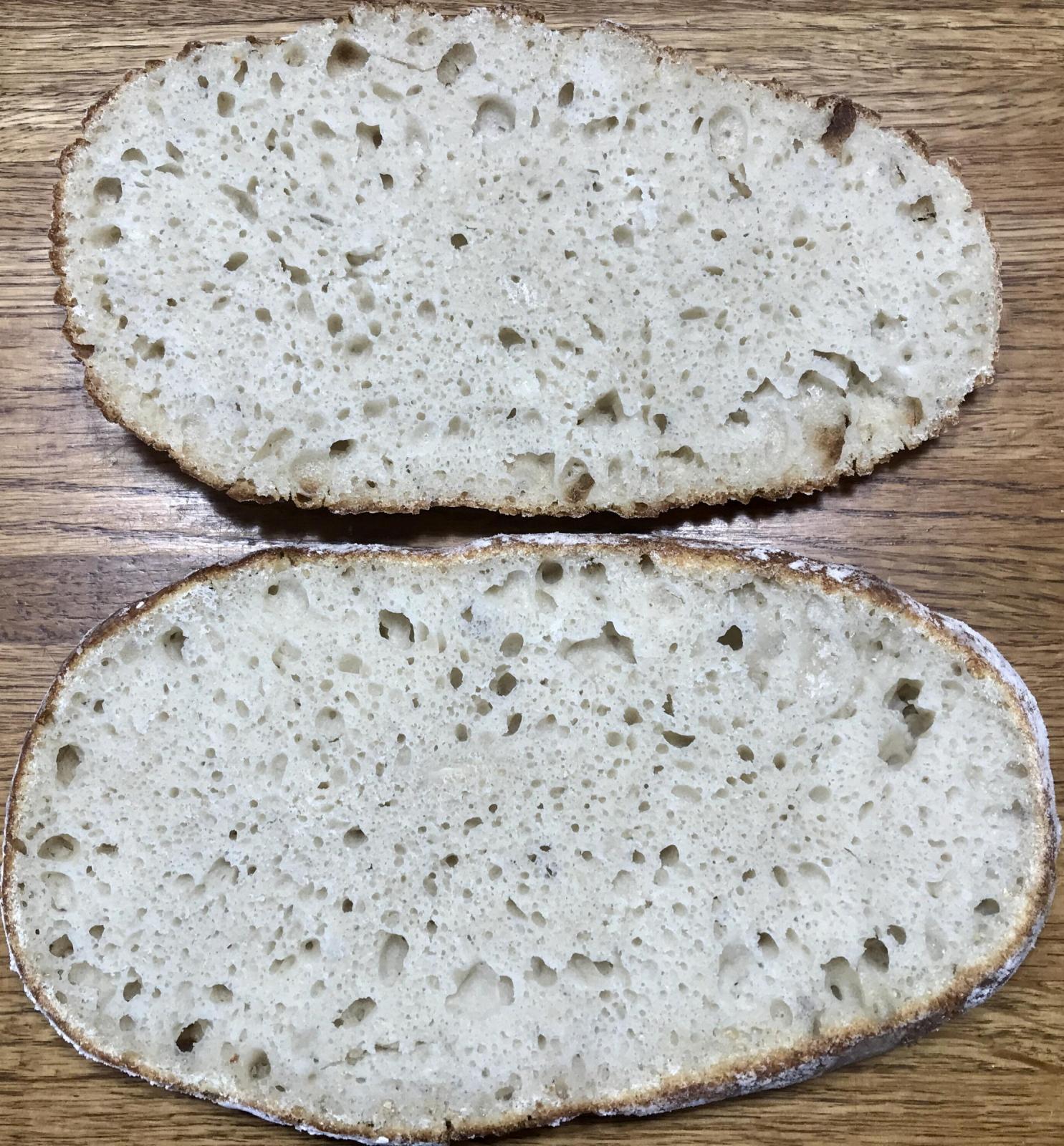
Dough hydration
Hi everyone,
I have a question about dough hydration. Or rather an observation, which I'm hoping others have experienced as well, and can shed some light on.
When I make dough using just regular dry yeast and keep the hydration to say 65% with the flour that I'm using, I have a dough consistency that I can knead. It starts out a bit wet and sticky, but then the gluten starts to kick in and I can work the dough on my countertop. However, if I use my sourdough levain (50% whole wheat, 50% water), and adjust everything to the SAME hydration level of 65% (compensating for the flour and water in my levain), my dough becomes too wet to knead (feels like about 75% hydration). Yes, I know it's sourdough, so I then resort to the stretch and fold method to work the dough and get it ready for pre-shaping and shaping, but I was curious as to why this is happening.
A couple of points here. With dry yeast I just use bread flour, which has about 12-13% protein. For sourdough, I end up with about 1/6 whole wheat from the levain (120 g levain added to 300 g flour and 174 g water), so there is a bit of an overall drop in gluten content. There should still be plenty of gluten to hold the dough together, which it does (during the stretch and fold, I can pull the whole of the dough off the bowl and it will hold together). I usually do about 5-6 stretches and folds about 30 minutes apart, then let the dough rise in the bowl until doubled (about 3-5 hours). Then I turn it out onto my countertop for pre-shaping (after which I let it rest for 10-15 minutes) before final shaping and putting it in a proving bowl. This pre-shaping and shaping gets very difficult with the wetness and stickiness of the dough. This does not happen when I use dry yeast. I then let it prove for another 3 hours or so at room temperature before retarding it in the fridge overnight.
Could someone tell me why this apparent increase in hydration is happening? Why is my sourdough starter making the dough wetter and runnier? Is there any way to control for this? I autolyse my dough for at least an hour, often longer, before I add the levain and salt. My levain is on the rise when I add it and is at least doubled from when I inoculated it from my starter.
Thanks in advance for your help and suggestions.




